Huawei P60 Pro Review: can a great camera make you forget the Google-less software?
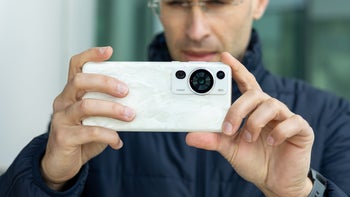
Huawei P60 Pro Intro
Four years after the United States hit Huawei with heavy sanctions and prevented it from using Google apps, the company has predictably lost most of its market share globally, but what you could not predict is that it will actually survive and persevere. And it has, it has been making phones all along, and while the software remains a Google-less sore point, the hardware is actually quite impressive.
What we have here is the Huawei P60 Pro, the company's 2023 camera-centric flagship and it shows that despite all odds, Huawei has managed to make a very compelling camera phone.
The company is also clearly not afraid to experiment with extravagant design styling, but what you should really care about is whether the Huawei P60 Pro has what it takes to beat established camera phones and steal their thunder. And well... can you realistically use a phone that doesn't have 5G connectivity or Google services?
Let's waste no time and find out!
What’s new about Huawei P60 Pro
- New pearl design finish
- Snapdragon 8+ Gen 1 chip, but no 5G
- Camera system shines
- Familiar Huawei software that runs smoothly
- Fast charging on board
Table of Contents:
Huawei P60 Pro Unboxing
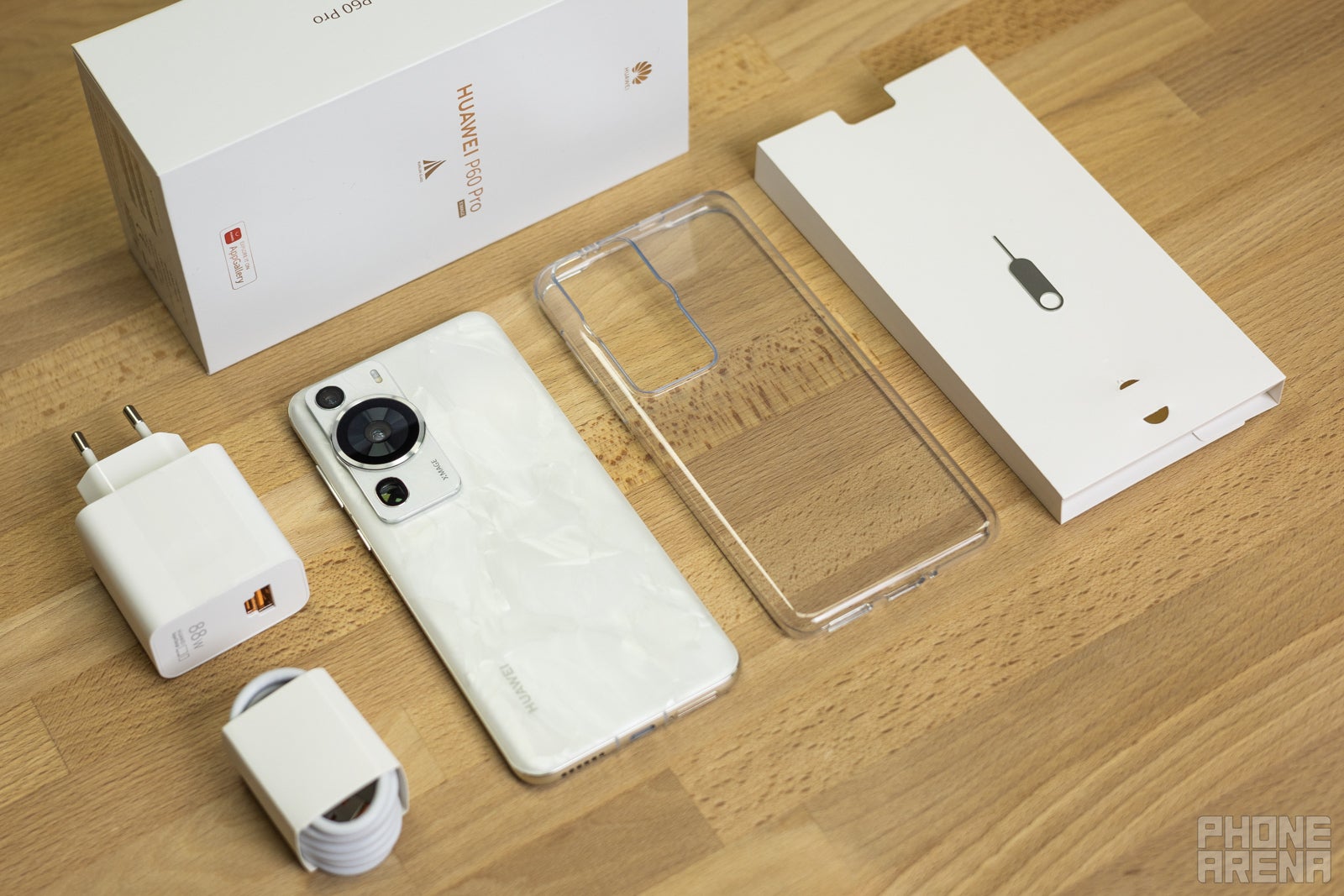
(Image Credit - PhoneArena)
The P60 Pro comes in a bigger box than most other phones and you can probably guess the reason why: it has a charger included in the box!
That's one thing that Samsungs and iPhones skip on, but you do get a powerful 88W charger with the P60 Pro, and not only that, you also get a free basic silicone case as well.
Below are the full contents of the box:
- Phone itself
- Silicone case
- 88W charger with BOTH USB-A and USB-C output
- USB (Type A to type C) cable
- SIM tool
- User manuals
The included charger is really clever: notice how it has both a standard large USB-A port, but also the newer and more common USB-C port right below it. Now, that's cool and useful design!
The phone also comes with a pre-applied thin film screen protector, which is another nice touch.
Huawei P60 Pro Specs
Despite sanctions, the Huawei P60 Pro specs sheet is almost as good as other 2023 Android flagships
Below, you can see the specs highlights of the P60 Pro:
| Specs | Huawei P60 Pro |
|---|---|
| Size, Weight and Colors | 161 x 74.5 x 8.3 mm 200 g Black or Rococo Pearl |
| Display | 6.7" OLED 1220 x 2700 px 120Hz |
| Processor | Snapdragon 8+ Gen 1 |
| RAM, Storage and Price | 8/256GB 12/512GB |
| Software | EMUI 13.1 |
| Cameras | 48MP main camera, 25mm with f/1.4-f/4.0 aperture 13MP ultra-wide, f/2.2 48MP 3.5X zoom (90mm), f/2.1 13MP front cam |
| Battery Size | 4,815 mAh |
| Charging Speeds | 88W wired charging 50W wireless charging |
The fast charging speeds are nice to see, but also typical across phones coming from China, but the things that really stand out are the camera system and also the lack of a Snapdragon 8 Gen 2 that most Android flagship phones have in 2023.
Ornamental, decorative, artsy... or just kitsch?
We were kind of split at the office when the Huawei P60 Pro arrived, but one thing was certain: it sure is attention grabbing.
Huawei says the clever, pearl-like finish on the back has a unique pattern on each phone as their is a manual element to it, and it's mesmerizing how this finish reflects light beautifully when you tilt the phone.
BUT to many it looked decisively old-fashioned and... downright gaudy. Thankfully, you also have a more traditional black version, which has none of that controversy. Where do you stand on that pearl finish?
Apart from the bold color, this is a fairly typical large Android phone: curved screen, 200g weight (that happens to be nearly 15% lighter than the iPhone Pro Max by the way), power and volume buttons on the right hand side. It's well put together and premium feeling.
Huawei also touts the "KunLun" glass as being extra durable and invites us to drop the phone from 3 to 5 feet high on a wooder or marble floor face down to test it out, but we still had a review to finish, so we did not dare do it, but it's nice to see a company so assured in the quality of this toughened glass.
The Huawei P60 Pro also comes with IP68 water and dust protection, again nice, but also kind of the standard these days.
Huawei P60 Pro Display
The 6.7-inch OLED screen here is ever so slightly tapered at the sides, which slightly complicates putting a screen protector. We were happy that the phone shipped with one though.
The display quality is really good, colors look gorgeous and it gets plenty bright hitting well over 1,000 nits in bright sunlight for easy legibility. This is a huge increase from the last year's P50 Pro, which did not get particularly bright and was harder to use outdoors.
The P60 Pro also features dynamic refresh rate to going from 1Hz to 120Hz, which aids in that buttery smooth scrolling feeling, but again, that's kind of the norm these days.
Display Measurements:
The fingerprint scanner is an in-screen one and it is placed right at the bottom of the display, which takes some getting used to. But it's quite fast and accurate, and we had no issues with it. Face recognition is also an option, but we've got no Face ID-like 3D face scans, it's just your basic 2D image based face recognition which is not quite as secure.
Huawei P60 Pro Camera
Variable aperture on the main camera gives you more flexibility
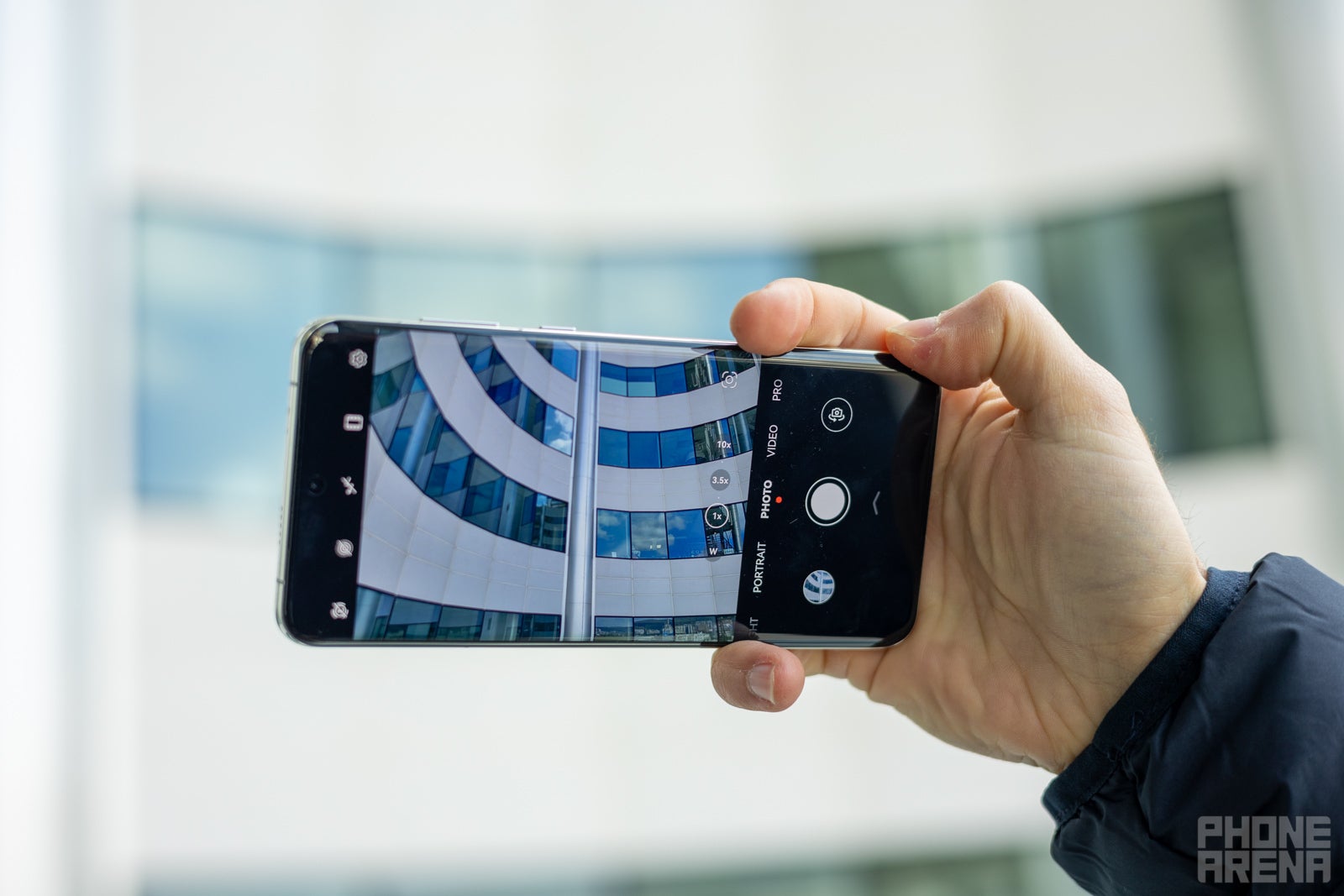
(Image Credit - PhoneArena)
Here is the camera hardware you get here:
- 48MP main camera with f/1.4 to f/4.0 variable aperture and OIS
- 13MP ultra-wide shooter, f/2.2
- 48MP 3.5X zoom periscope camera with f/2.1 aperture and OIS
The show-stopper is the variable aperture on the main camera. An f/1.4 aperture on a phone camera is the widest we have seen, which should give the phone a big advantage in gathering light at night, but it will also automatically recognizes what you are shooting and choose a different focal length as needed. If you shoot a group of people in a few rows for example, an f/1.4 aperture might not work as some of the rows will be blurred, so the phone will switch to a faster aperture.
Main Camera - Day
When just using the auto camera mode, the P60 Pro itself decides what aperture value to use. If you want manual control over the aperture, though, tough luck. You can technically control the aperture via the Pro mode, but the image quality is surprisingly poor with visible noise even in bright daylight, so realistically, you are better off sticking with the auto mode which at least has clean detail.
Most daytime shots defaulted to an f/2.0 aperture, which gives you a nice field of view, while most night shots were at f/1.4 to maximize the light input. Is this variable aperture a game-changing feature? Not really, but it's a nice option to have for the enthusiast who wants more control over their smartphone photos.
Overall, image quality during the day is definitely on par with other flagships, but we cannot say that it is extraordinary in a truly meaningful way.
Low-light
Pictures in low light also turn out great with the main camera. Huawei pioneered Night Mode and you can tell that this phone has still got it as it captures a ton of light and images look clean and sharp, with plenty of detail.
We did notice a weird bug with the ultra-wide camera, though. It would occasionally capture blurry pictures at night, which was definitely unexpected and we hope it gets fixed with a software update.
Portrait Mode
Portrait mode photos look great on the Huawei P60 Pro.
Colors are not overly exaggerated, detail is plentiful and the phone does an excellent job separating the subject from the background.
It's also very important for a good portrait mode shot to have different focal lengths, and the P60 Pro supports 1X, 2X and 3X portrait options, which is more than most flagships and gives you that much needed variety.
Video Quality

With a solid photo performance, we were hoping to see a similarly great video recording quality, but unfortunately that's not the case.
Our P60 Pro captures videos with very grainy detail, even in 4K resolution. We don't know whether it's excessive software sharpening to blame or some peculiarity of the sensor (we bet on the former), but it's a really annoying issue.
Another thing to note is that in low light and at night, the quality is overall good, but brighter lights tend to burn out so you don't really have amazing dynamic range.
The camera app also does not have quick toggles to switch between the native lenses in video, which is another weird thing that just makes your life difficult.
Video stabilization at least is quite solid, so no complaints on that front.
Huawei P60 Pro Performance & Benchmarks
Snapdragon 8+ Gen 1 is fast enough, the lack of 5G is the only real complaint
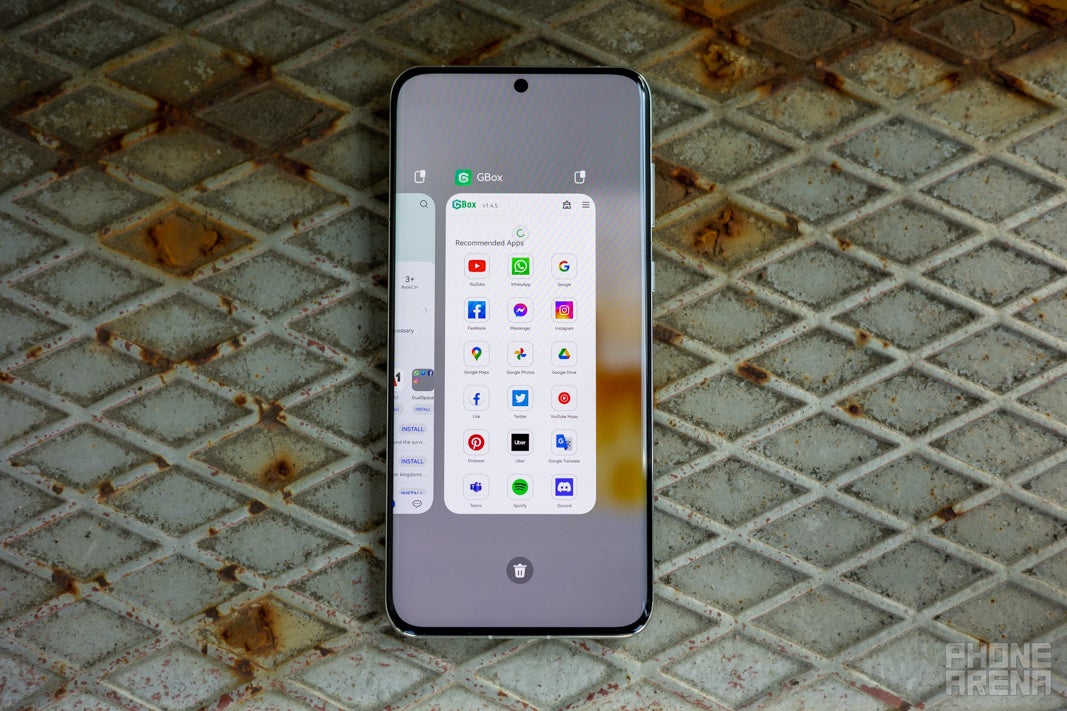
(Image Credit - PhoneArena)
While most Android flagships in 2023 come with the Snapdragon 8 Gen 2 chip by Qualcomm, Huawei is using the older generation Snapdragon 8+ Gen 1 in a special version of the chipset without 5G connectivity. The 5G modem is apparently a sanctioned component which Huawei is prohibited from using, so that is why it has chosen this chip and this configuration.
We had no complaints with the speed of the Snapdragon 8+ Gen 1 on board here, though. Huawei has always been excellent when it comes to smooth, stutter-free performance and that is exactly what we get with this latest P60 Pro. Everything runs without a hiccup.
Performance Benchmarks:
Benchmarks do reveal that this Snapdragon 8+ Gen 1 chip is significantly behind the latest iPhone 14 Pro series and the Snapdragon 8 Gen 2 powered phones like the Galaxy S23 Ultra.
On the other hand, though, the chip is faster than Google's current Tensor G2, so we cannot really fault it much. And it's a very big step up from the Snapdragon 888 4G chip used in the previous Huawei P50 Pro version.
Huawei P60 Pro: The 5G Connectivity problem
Because of the US trade sanctions, Huawei cannot use 5G chips, so that's why the phone is equipped with a special version of the Qualcomm Snapdragon 8+ Gen 1 chip with only 4G connectivity.
The lack of 5G connectivity is probably not a huge deal as most metrics still show that 5G connectivity is only barely faster than 4G LTE. However, if you know you have excellent 5G coverage and get great 5G speeds in your particular region, the P60 Pro will definitely look flawed.
There is a weird work-around. Huawei sub-brand Soyealink makes a case with 5G connectivity. It's a quite thick case at 3.2mm that you slap on your device and this enables 5G connectivity, and while this is some solution, it means going through a lot of hoops for this phone.
Huawei P60 Pro Software
The most contentious thing about the Huawei P60 Pro is without a doubt its software.
The phone officially runs on Huawei's EMUI 13.1. Huawei does a superb job optimizing this interface to work smooth and gestures feel incredibly satisfying on the phone. There are quirks like the widget-like app icons. You can swipe on an icon which kind of expands the icon into a widget with shortcuts, a feature that we felt was a bit extreme, but some people may appreciate it.
However, the real problem here is the lack of Google apps and the overwhelming amount of totally unfamiliar apps that Huawei has developed to replace popular Google alternatives.
This has always felt like a bit of a doomed effort. Instead of Google Maps, users are offered to use "Petal Maps", which may handle your basic navigation needs, but is by no means as complete as Google Maps. Then, the Google Play store is replaced with Huawei's App Gallery, which has some apps, but is again not even close to the original.
So can you even get Google apps to run on the Huawei P60 Pro?
Android supports side-loading, so it is possible. Out on the wild of the web, you can download the GBox app, which allows you to quickly install missing Google apps on your Huawei phone, but we are not sure if that app is even legal. You can also go on sites like APK Mirror to manually download APK files to install popular apps, but again, this is not something we can ever recommend to an average user and there are obvious security risks with downloading such files from unverified sources.
At the end of the day, there are some workarounds for the Google services situation, but A. they carry some safety risks, and B. we are not even sure if they are entirely legal. So at the end of the day, for most people, the handicapped software remains a huge issue and until that dispute is settled, we cannot recommend a Huawei phone to the average user.
Huawei P60 Pro Battery
Nothing out of the ordinary, but a really cool fast charger
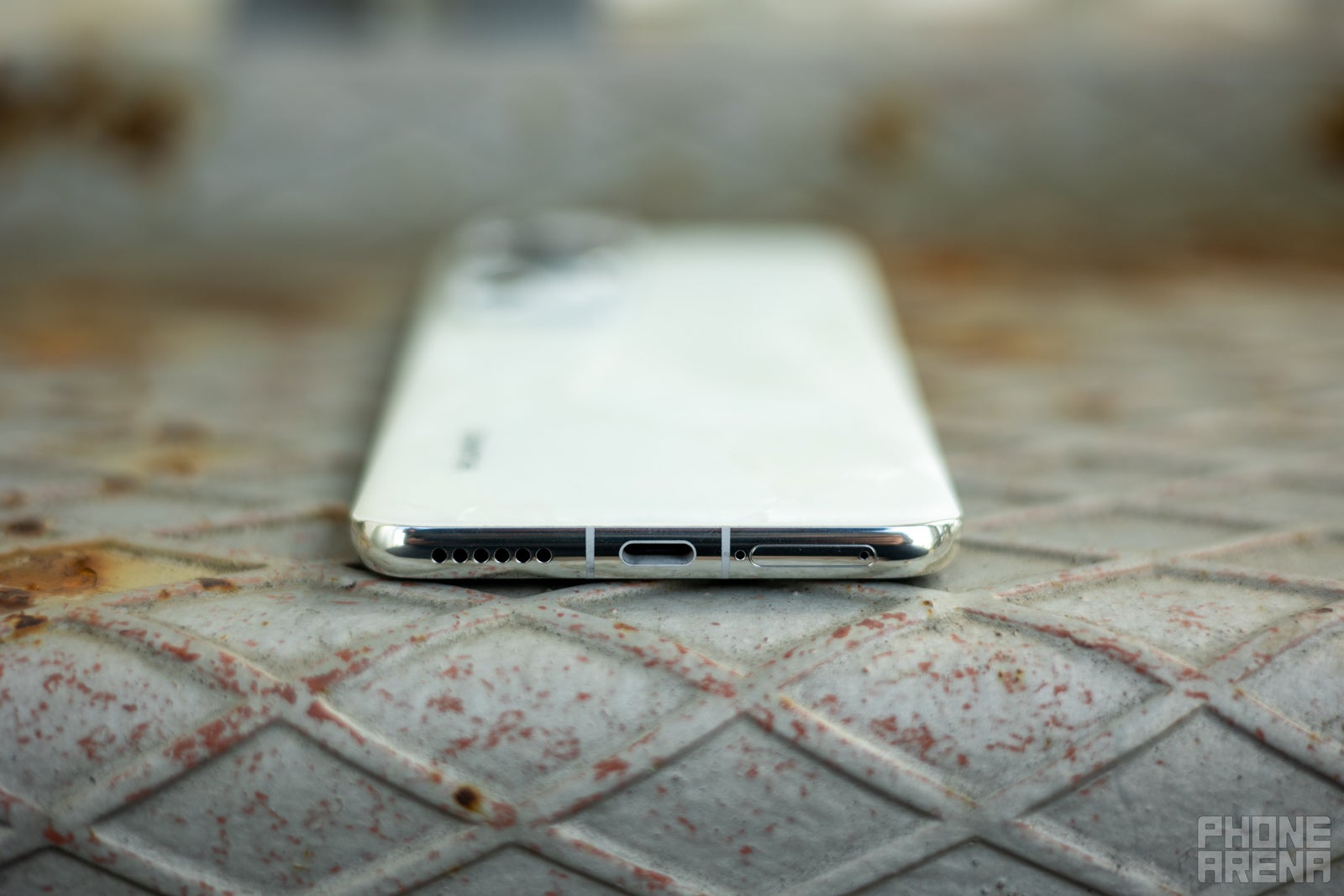
(Image Credit - PhoneArena)
With a 4,815mAh battery inside, the P60 Pro is actually a tiny bit behind most Android flagships of its size which tend to come with a 5,000mAh battery.
Our real-world experience, however, shows this is not really much of an issue and you should be able to go through a full day without much trouble.
But we never quite had a feeling of using a battery champ either.
PhoneArena Battery Test Results:
We were only able to run our web browsing test which runs a script with a set of web pages and simulates a typical browsing session, and in this test the Huawei P60 Pro actually performed way below the average.
Unfortunately, the software on the phone prevented us from running our YouTube video streaming test for a fuller picture.
Huawei P60 Pro Charging Speeds
It has a standard USB-A sized port and the more common now USB-C port, but it's such a clever design that we wish most chargers looked like this.
The speed on the charger reaches up to 88W fast charging, and the phone tops up fully in just about half an hour, which defeats the need for overnight charging for most people.
The phone also supports wireless charging at speeds of the whopping 50W! That's faster than wired charging on Galaxy phones and iPhones!
Huawei P60 Pro Audio Quality and Haptics
Devices like the iPhone 14 series or our current audio champ the Asus ROG Phone 7 are ahead in the audio department.
There is no 3.5mm headphone jack on the P60 Pro.
Haptics feel refined on this phone and you get a nice and tight vibration feedback for notifications, so no complaints on that front.
Huawei P60 Pro Competitors
Those looking into the Huawei P60 Pro will probably be drawn mostly to its camera.
If you want the best video quality, the P60 Pro is definitely not a good option and you would be better off with an iPhone 14 Pro.
If you are looking for great low-light performance, you should also consider the Galaxy S23 Ultra and Pixel 7 Pro.
And if you want cutting-edge camera hardware, the new Vivo X90 Pro Plus is our personal favorite for night time photos and portraits, while the Xiaomi 13 Ultra is another great choice for all-around photography and especially zoom.
Huawei P60 Pro Summary, Prices and Final Verdict
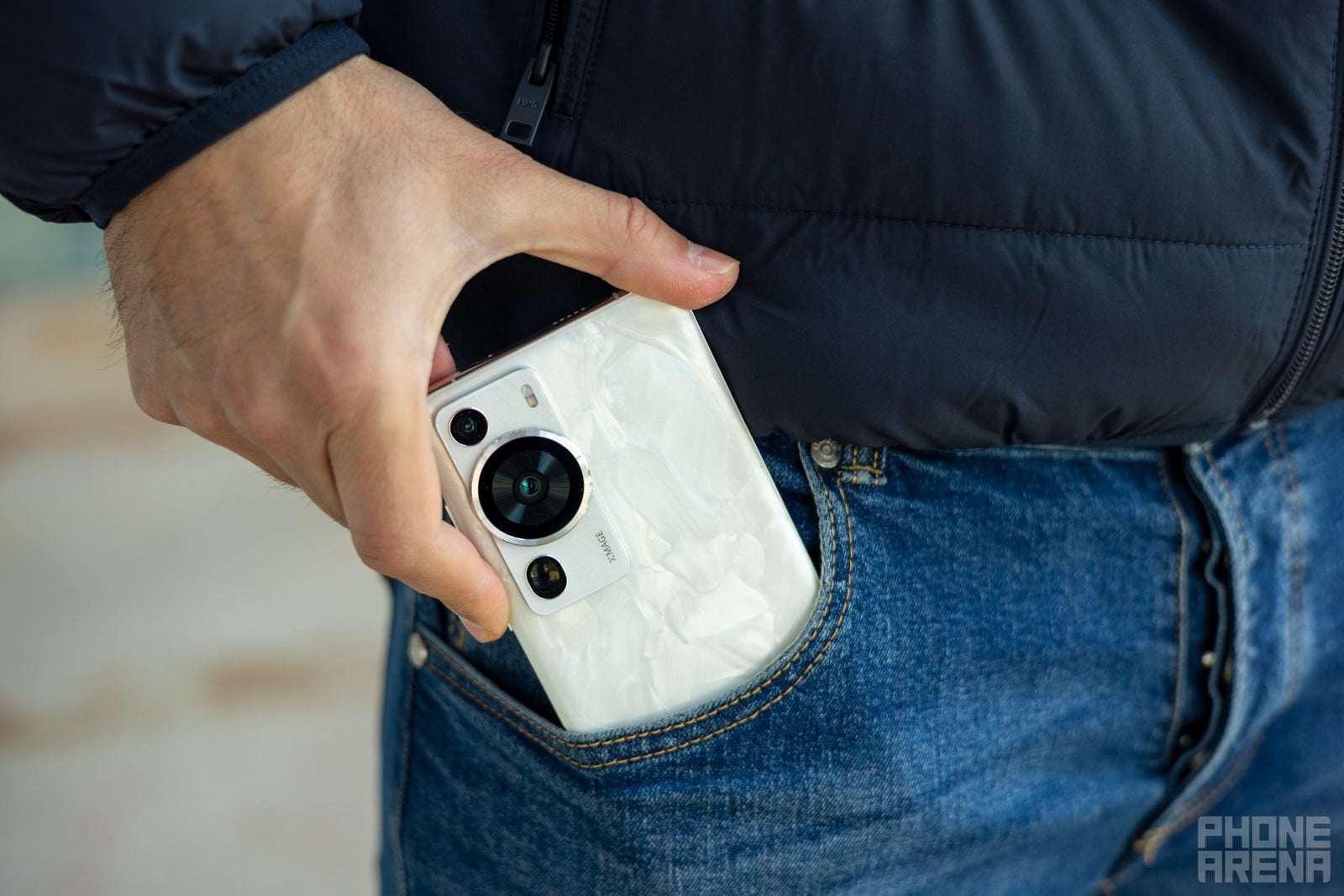
(Image Credit - PhoneArena)
So... what's the verdict on the Huawei P60 Pro?
If you appreciate the bold design and want to stand out, this phone definitely does. The main camera is excellent and really impressive, and we also loved the portrait mode photo quality, but this is not quite the all-around camera champ with the issues we noticed for video recording quality. The smooth performance and fast charging are also on the list of pros, and so is the brilliant display here.
At the end of the day, with no native Google services, it's still hard recommending a Huawei phone to the average user.
However, if you know what you're doing and are comfortable with sideloading apps and tweaking your Android device, then you can make it work.
But hold on tightly to your chairs: the Huawei P60 Pro costs a whopping £1,200 in the UK and €1,200 in Europe! For a phone with that one significant issue with Google services, this kind of price is very hard to justify.
Huawei is faced with a tough dilemma in making a premium phone with so many limitations, but it's trying its best. The question is... would YOU give it a chance and experiment with all the different Google workarounds in the name of using a Huawei phone?
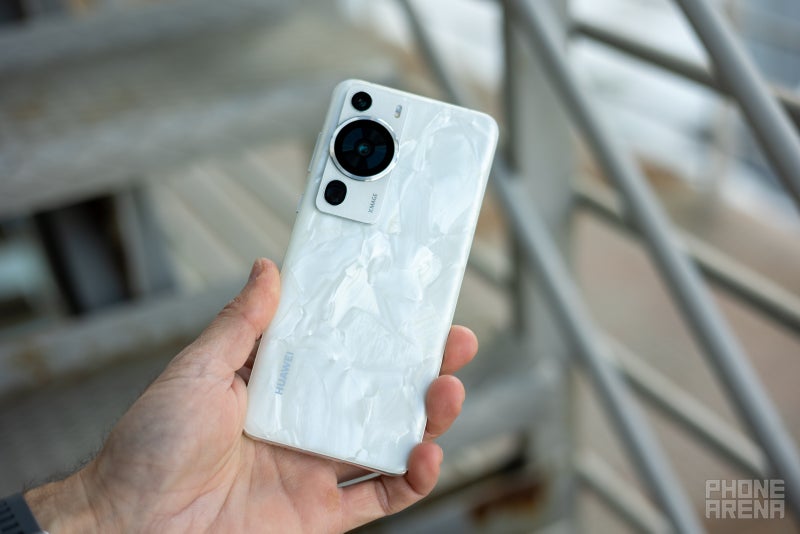
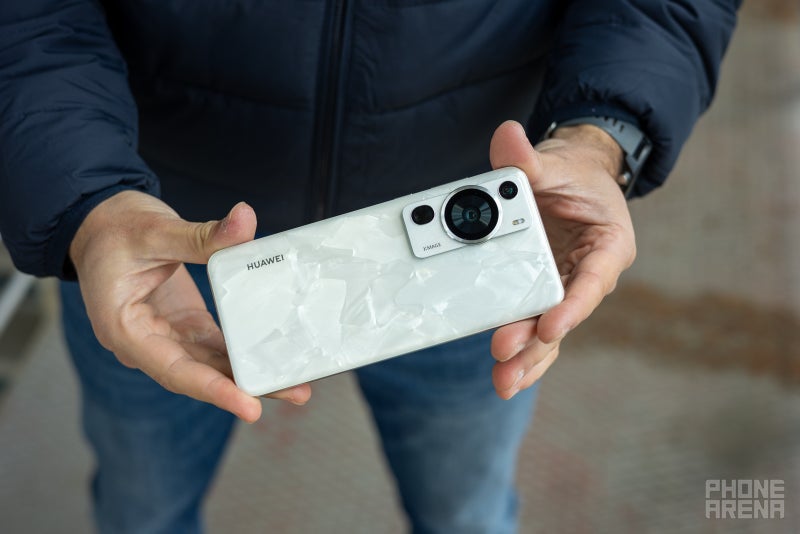
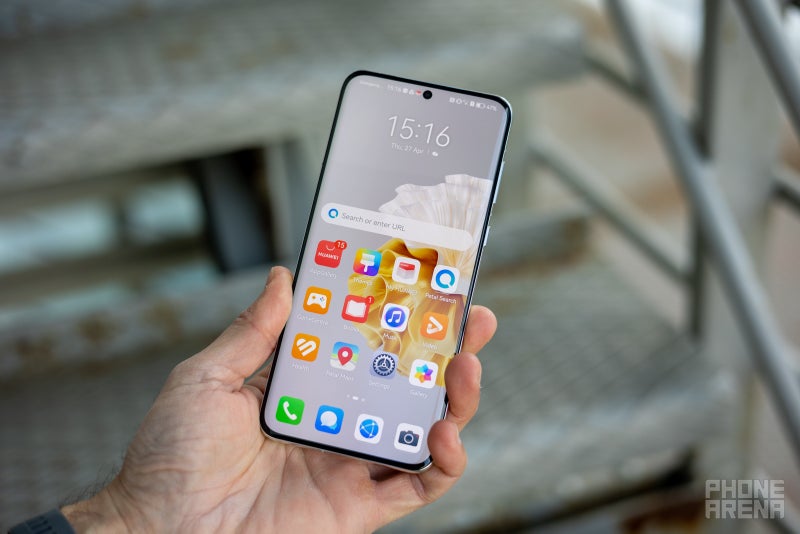
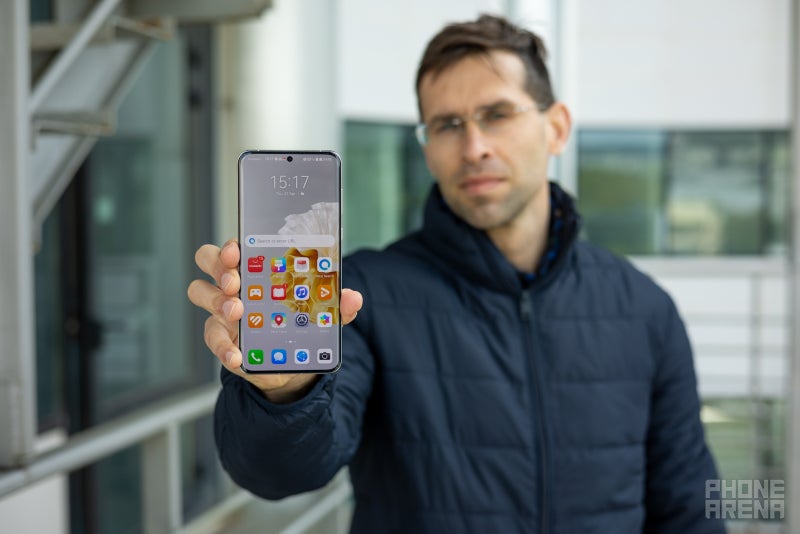















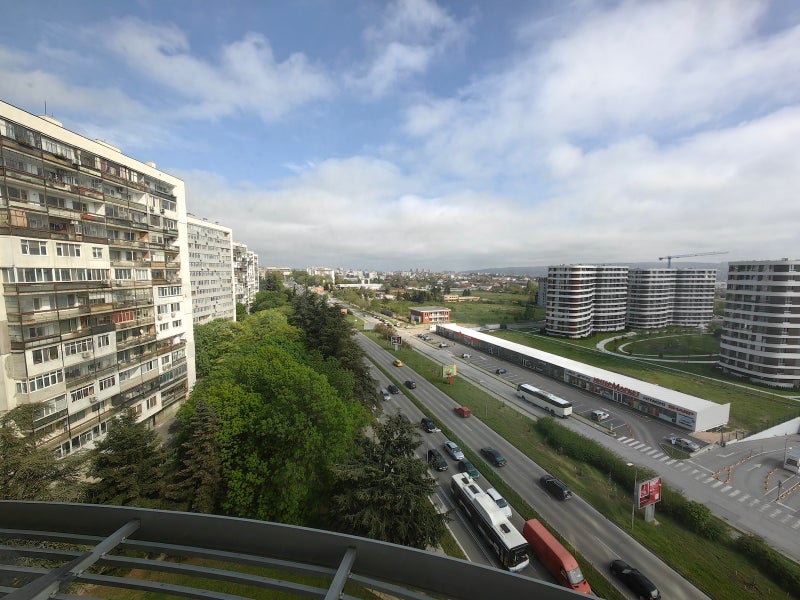


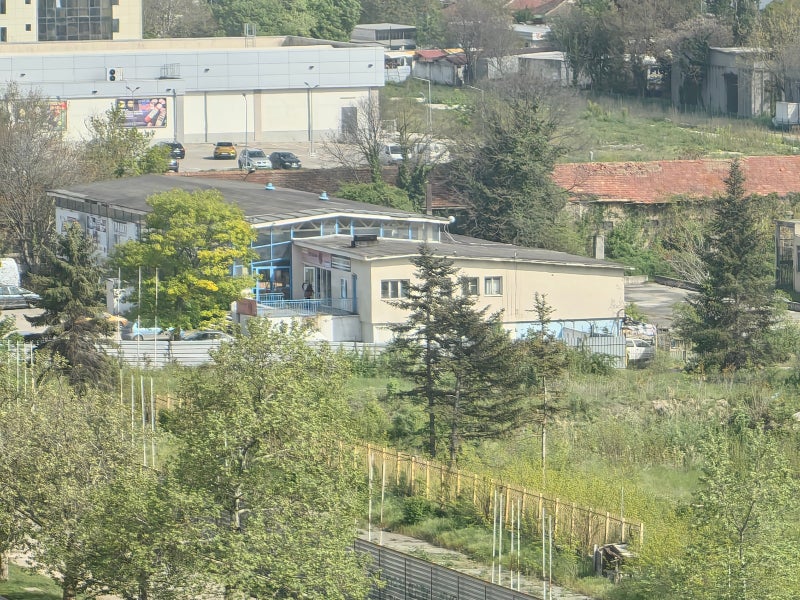




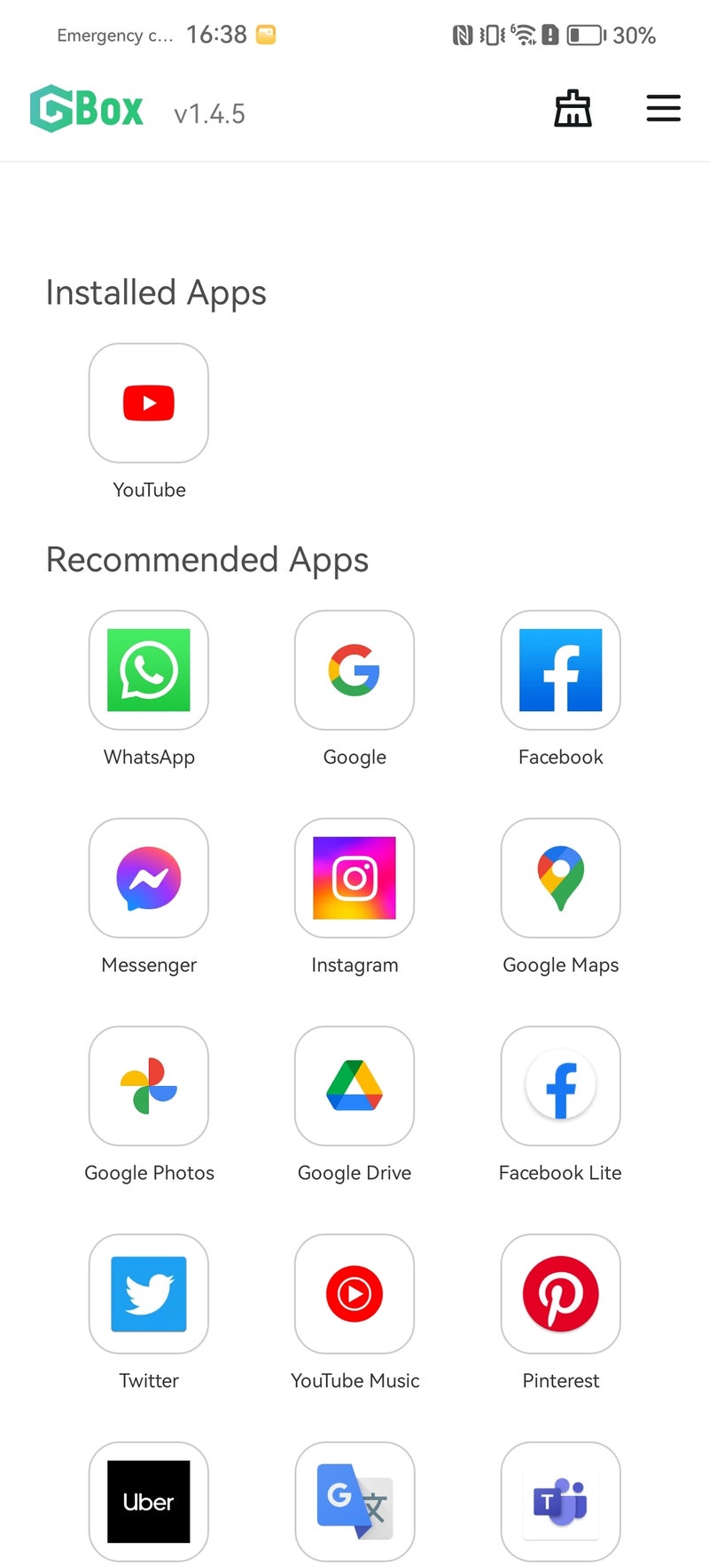
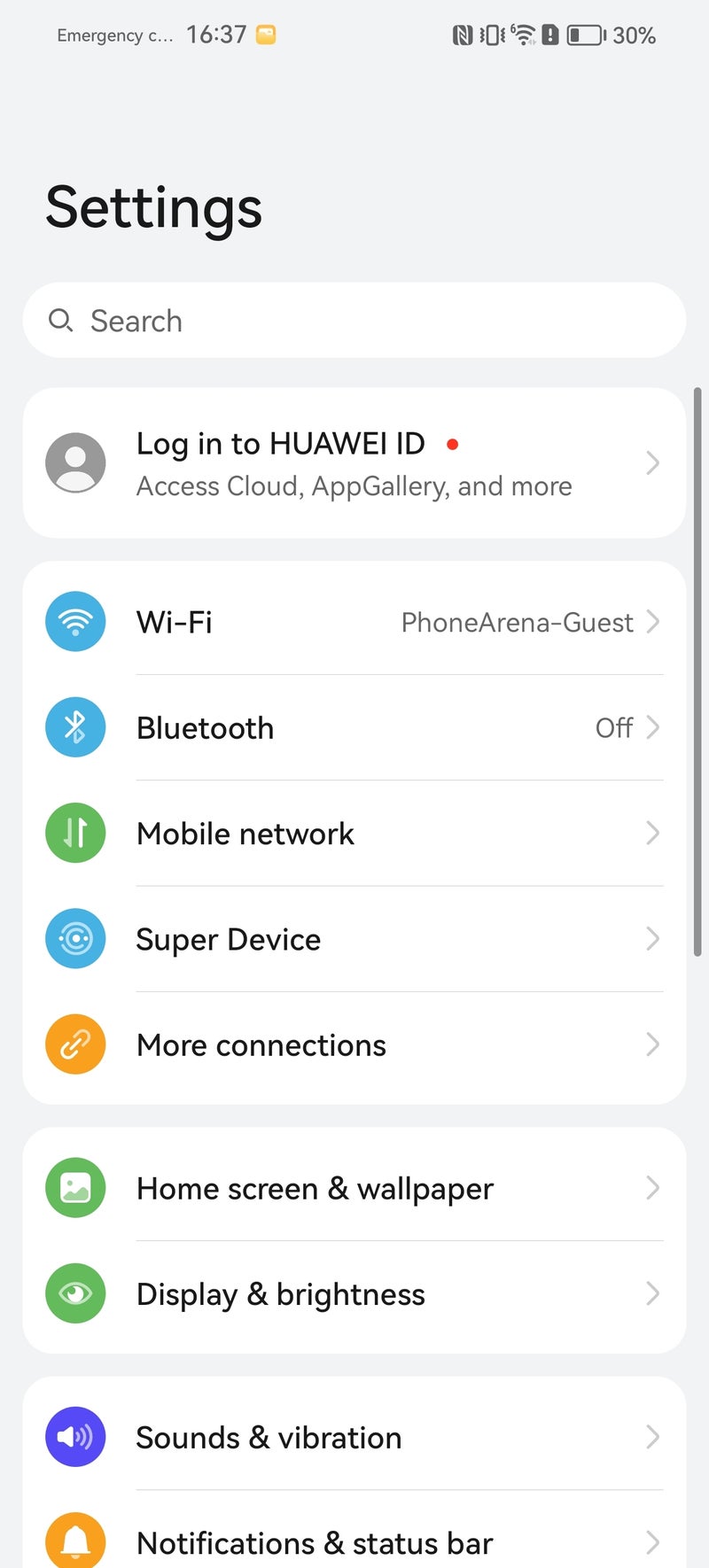
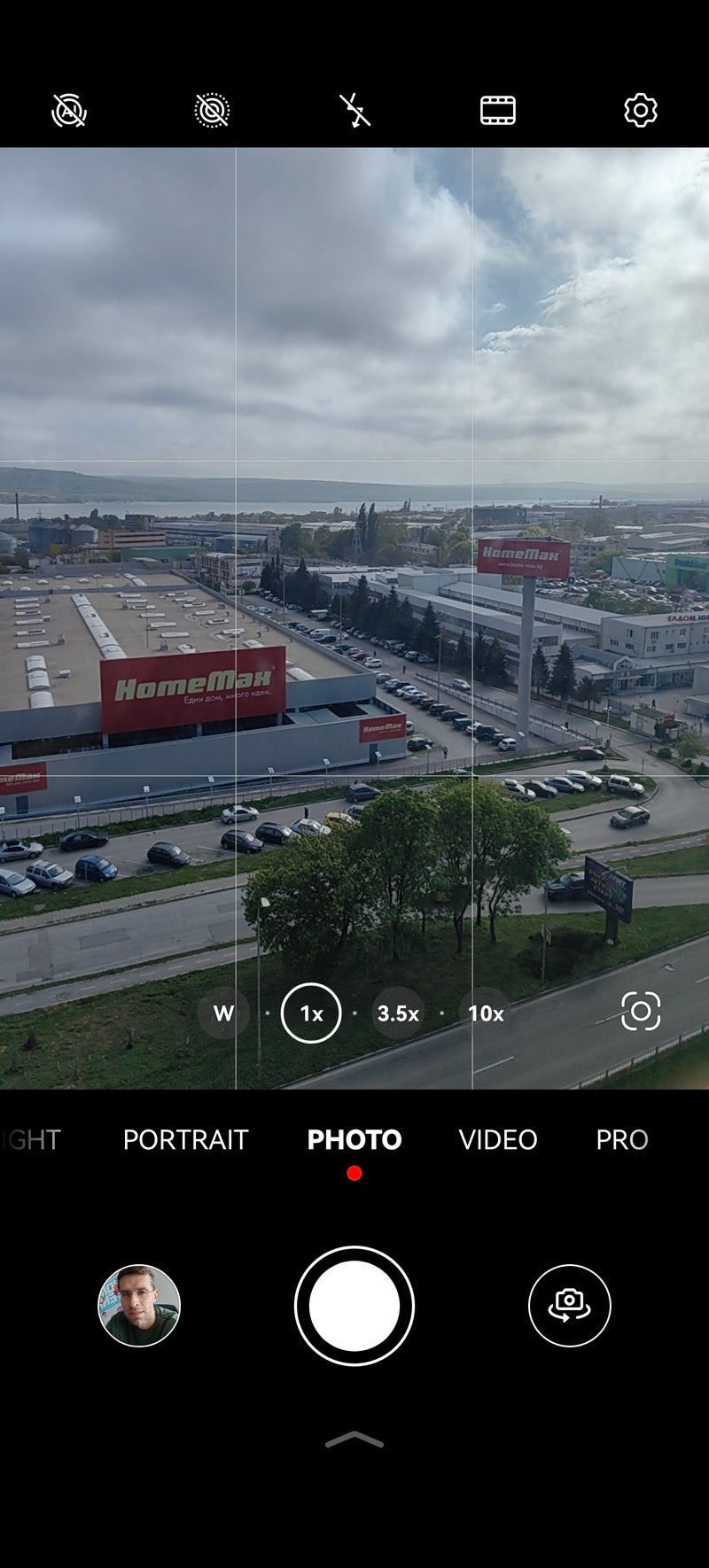










Things that are NOT allowed: